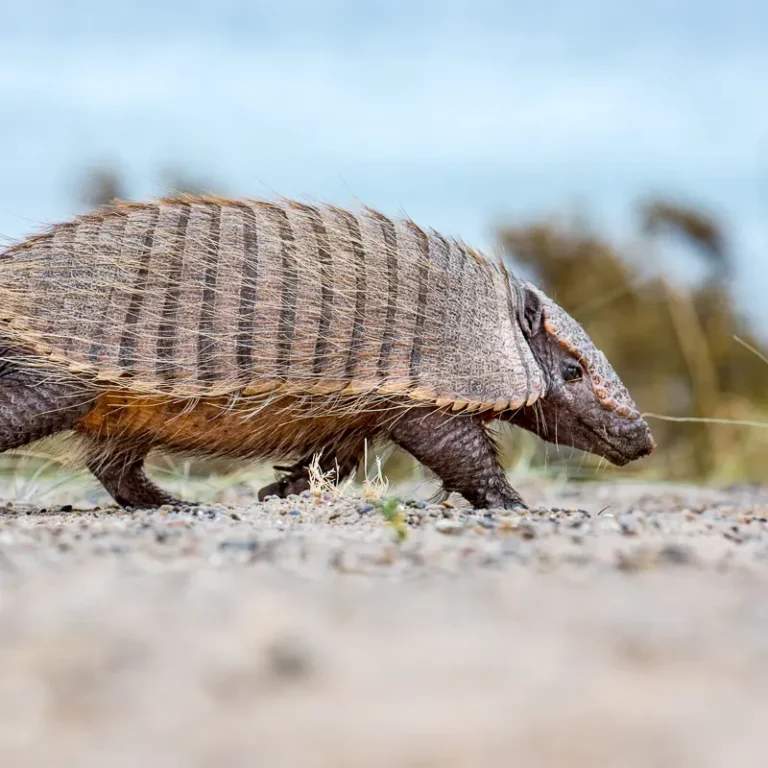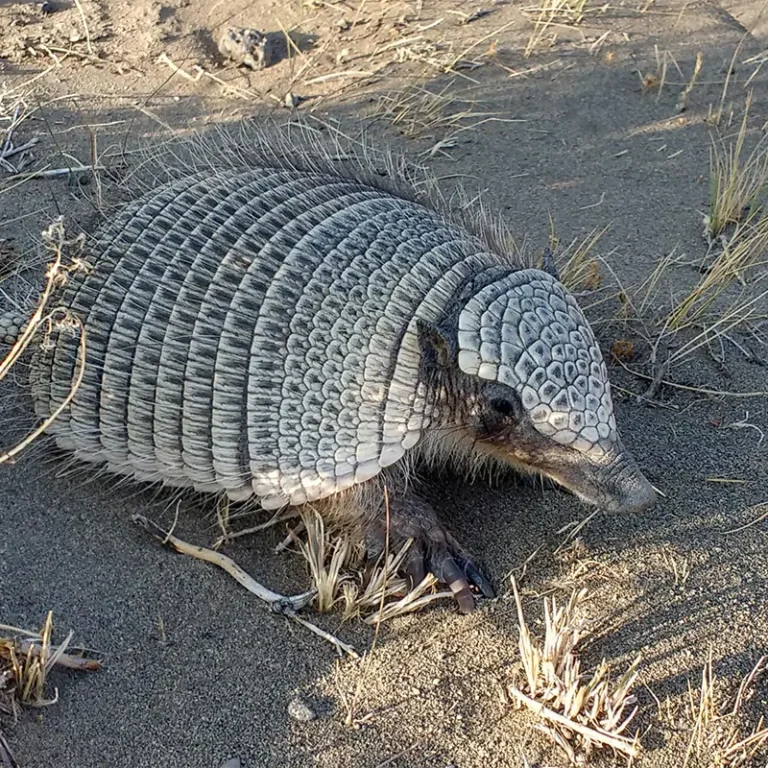Context and objectives
Piche: Evaluate the effect of pine monocultures in Northern Patagonia on the availability of food for the Patagonian Piche.
Large hairy armadillo: evaluate the factors (ecological and sanitary) that have favored the colonization of the large hairy armadillo of the Isla Grande de Tierra del Fuego.
Our actions
- We have conducted research to generate inputs for decision-making for the protection of the piche in pine crop areas and for the control of the invasion of the large hairy armadillo in Tierra del Fuego.
Protagonists
Habitat and behavior
Armadillos are the only representatives of the order Xenarthra that currently inhabit Patagonia. They are species with solitary habits and, since they depend on being able to dig the soil to make caves and look for food, they prefer loose soils with little humidity, typical of areas of the steppe and the ecotone with the Patagonian Andean forest. While the piche is found throughout continental Patagonia, the large hairy armadillo is also found in the northern part of the Isla Grande de Tierra del Fuego, where it is an invasive species.
Feeding
Both species feed mainly on terrestrial invertebrates, small terrestrial vertebrates, and roots. They also consume carrion and are often found taking advantage of carcasses of dead animals in the field.
Reproduction
Both species reproduce once a year, at the end of winter. They produce litters of 1 or 2 offspring in the case of the piche, while the large hairy armadillo can have litters of 3 offspring.
Curiosity
Both species have deficiencies in maintaining heat. For example, in Tierra del Fuego, the large hairy armadillos seem to be associated in the field with gas pipelines for whose transport there are heating stations. It is very common to see large hairy armadillo burrows associated with these heating stations. Another curiosity regarding the large hairy armadillo is that its presence in Patagonia is recent (a few hundred years) and its expansion in the region is attributed to human action for two reasons: the appearance of bridges that have allowed it to overcome the large rivers (barriers to dispersion) through the appearance of bridges and the transfer of animals for consumption.
Threats
Although the distribution area of both species in Patagonia is very extensive, the species face certain threats locally. In northern Patagonia, many ecotone and steppe sectors have been transformed by extensive pine plantations. These monocultures modify the availability of food for the species, since the diversity of invertebrates and plants in them is much lower. On the other hand, and mainly the large hairy armadillo, is persecuted by rural people since they have been described consuming exhausted birthing sheep and their lambs. Additionally, they are thought to increase the risk of fractures in livestock due to the habit of digging the ground to look for food and build caves.







